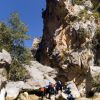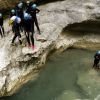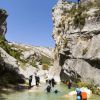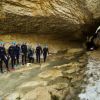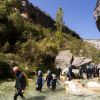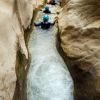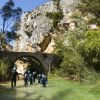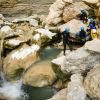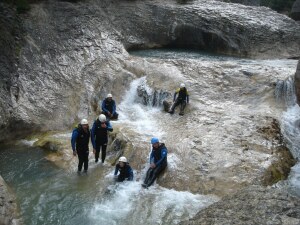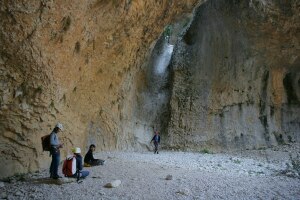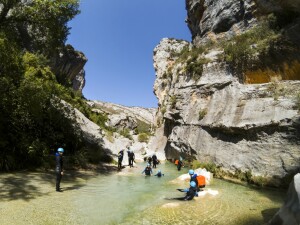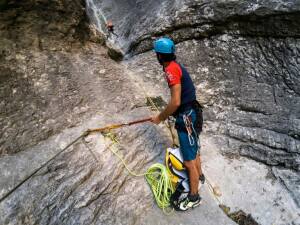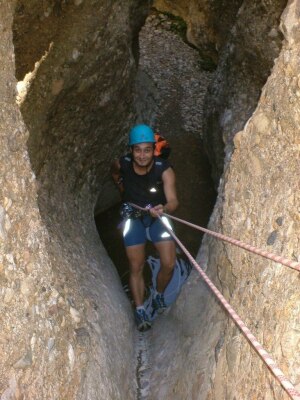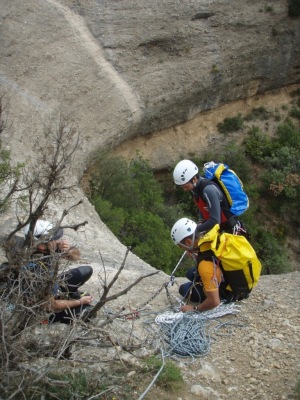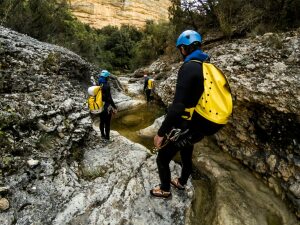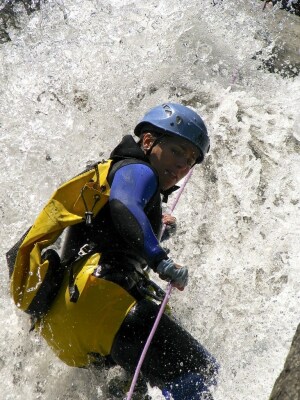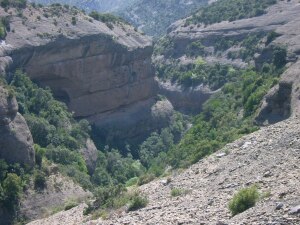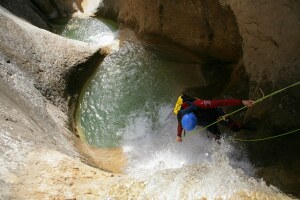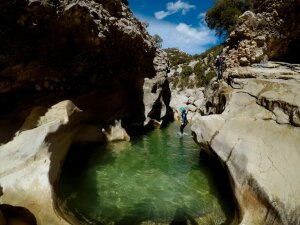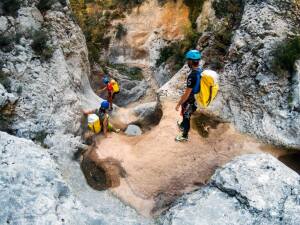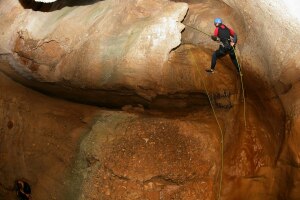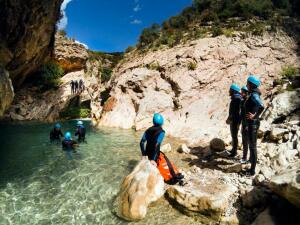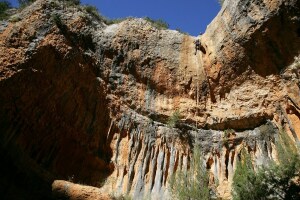The River Vero canyon is one of the most spectacular within the NaturalPark of the Sierra de Guara, and one of the best known canyons in Europe. Its huge cliffs and many caves are ideal nesting spots for the birds of prey that inhabit the park, and are also home to many small wallcreepers (tichodroma muraria.) The canyon offers an attractive descent of around 6km in length, which is suitable for those in good physical condition and used to trekking.
The interior of the Vero canyon has long been known to the inhabitants of the area. There are traces of small, abandoned vegetable plots, mills and other buildings that made use of the water next to the river. There are also small chapels such as that of San Martin located at the point where the Vero meets the La Choca canyon, and impressive cave paintings dating back to pre-historic times.
These days, this canyon is the most popular in Guara, as it relatively easy, offers plenty of variety and is great fun; not to mention the magnificent views.
The River Vero, which receives practically all its water from the Berrala spring, has exploited the calcareous rock as it flows down the canyon, leaving behind an astonishing landscape. The river runs past the Lecina gorge; the Palomera cave; narrows such as the “Oscuros” where it almost disappears underground due to one of the largest rock piles (caos) in the whole of the park; the impressive cliffs in the Clusas and Villacantal gorges; huge boulders, enticing caves, quirky channels and deep pools of transparent water. This canyon offers a long and diverse descent.
Along the way there are openings to other canyons such as those of Portiacha and Basender, whose tributaries suddenly increase the water flow during and after storms. The Villacantal bridge, which leads towards Alquézar, awaits canyoners at the end of the route soon followed by the Fuendebaños bridge a little further along.
In a number of wet places such as around the springs or the hollows near the water, the large-flowered butterwort (pinguicola grandiflora) grows; a carnivorous plant that often shows the remains of unfortunate insects on its vividly coloured petals. At first glance the petals seem normal, but closer up a multitude of fine hairs can be distinguished, which secrete a sticky substance. When prey gets caught in the stickiness, a different gland then starts to secrete a liquid made up of acids and digestive enzymes that dissolve the softest parts of the insect. The same gland then reabsorbs this liquid, now rich in nutrients.
Downloads
Technical information
Approach: 10 minutes. From the River Vero car park, which is between the 16 and 17km mark on the road from Colungo to Arcusa. Nearest village: Lecina
Descent: 5 - 7 hours KM: 6km
Return: 35 minutes to Alquézar via the Footbridge Walk or the path that climbs up from the old electricity mill
Escape routes: Various along the canyon.
Pasolen/ Los Articazos
La Visera
Villacantal
Car combination: 1 car in the River Vero car park and 1 car in Alquézar.
Difficulty level: Depends upon the water flow and weather conditions.
Medium difficulty in summer.
Professional level as the river rises.
Minimum equipment requirements
- Full wetsuit and neoprene socks or canyoning shoes.
- Helmet
- 15m rescue rope
- Canyoning backpack
- Watertight barrel
- Due to the length the route, it is advisable to take along drinking water and a picnic.
Points of interest
- Schematic rock paintings in the Barfaluy shelter
- Caves with rock paintings in the stretches known as Gallinero and Lecina Superior
- The San Martin chapel
- Villacantal bridge
- Fuendebaños bridge
- Medieval villa of Alquézar
Photo gallery



